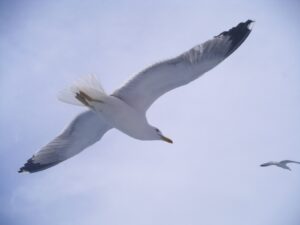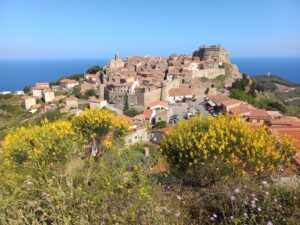Birding the Tuscan Archipelago
Tuscan Archipelago National Park comprises seven small islands, Montecristo, Giannutri, Gorgona, Capraia, Elba, Giglio, and Pianosa, their rocky cliffs largely covered by maquis, garrigue, evergreen scrub, and pine woodland. The larger islands also have  large evergreen woodlands, grasslands, and agricultural fields and pastures. Each of the seven islands also has its own distinctive geological and botanical traits.
large evergreen woodlands, grasslands, and agricultural fields and pastures. Each of the seven islands also has its own distinctive geological and botanical traits.
Every spring and autumn, thousands of birds pass through the Tuscan islands as they follow migration routes connecting Italy with the coast of Africa. For many of these migrants, the archipelago serves as a sort of rest area during the long flight across the open Mediterranean. Since the turn of this century, birders and researchers have been monitoring migrating raptors from hawk watches on several of the archipelago’s islands.
The archipelago also supports breeding colonies of Cory’s and yelkouan shearwaters, shag, and storm petrel. The more remote islands host nesting pairs of Audouin’s gulls, one of the rarest gull species in the world and a Mediterranean endemic. The abundance of these species has increased as a result of rat eradication projects successfully carried out by the national park.
Other key birds nesting on the islands include peregrine falcon, blue rock thrush, black-eared wheatear, and Marmora’s, subalpine, Sardinian, spectacled, and Dartford warblers.
Tuscan Archipelago can be easily reached from Pisa, Livorno and Grosseto
